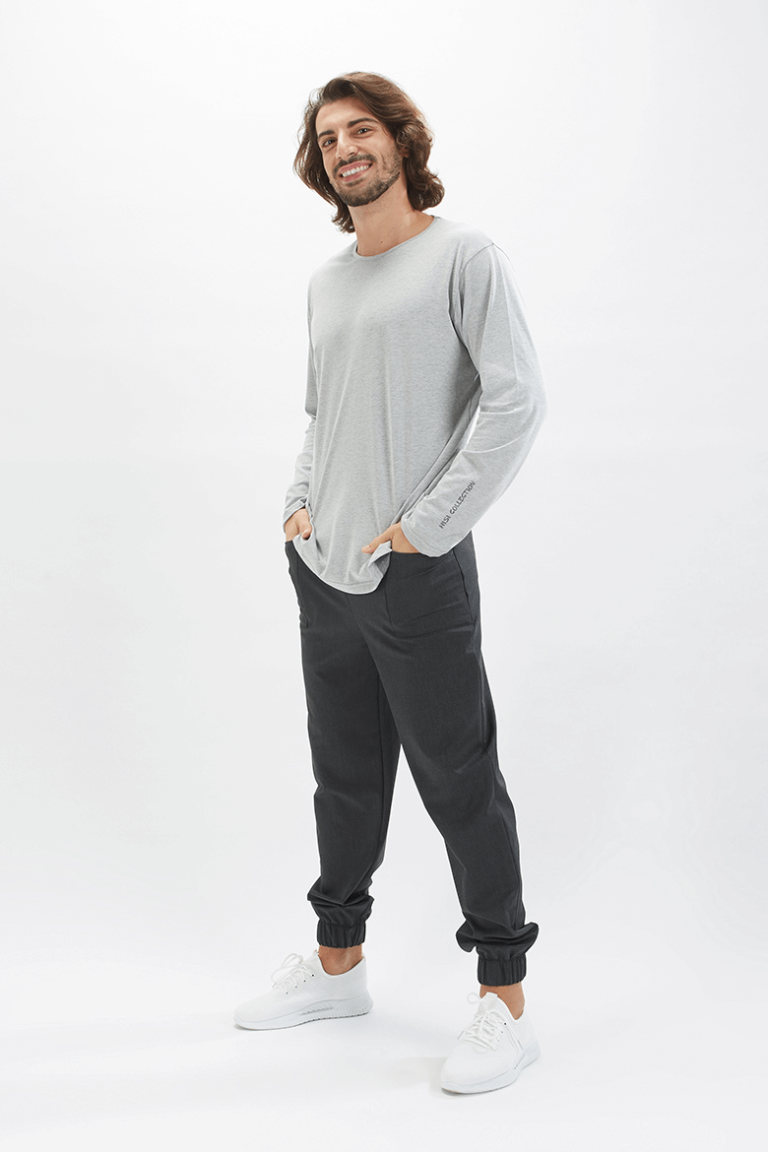

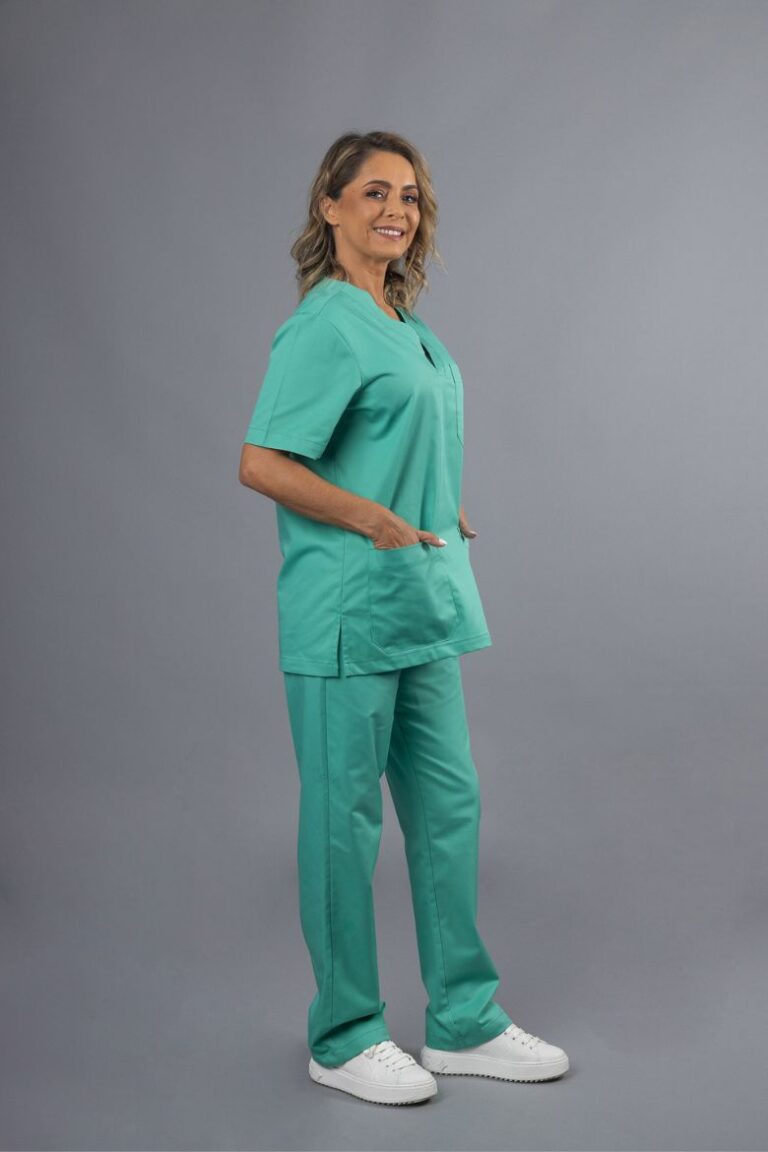
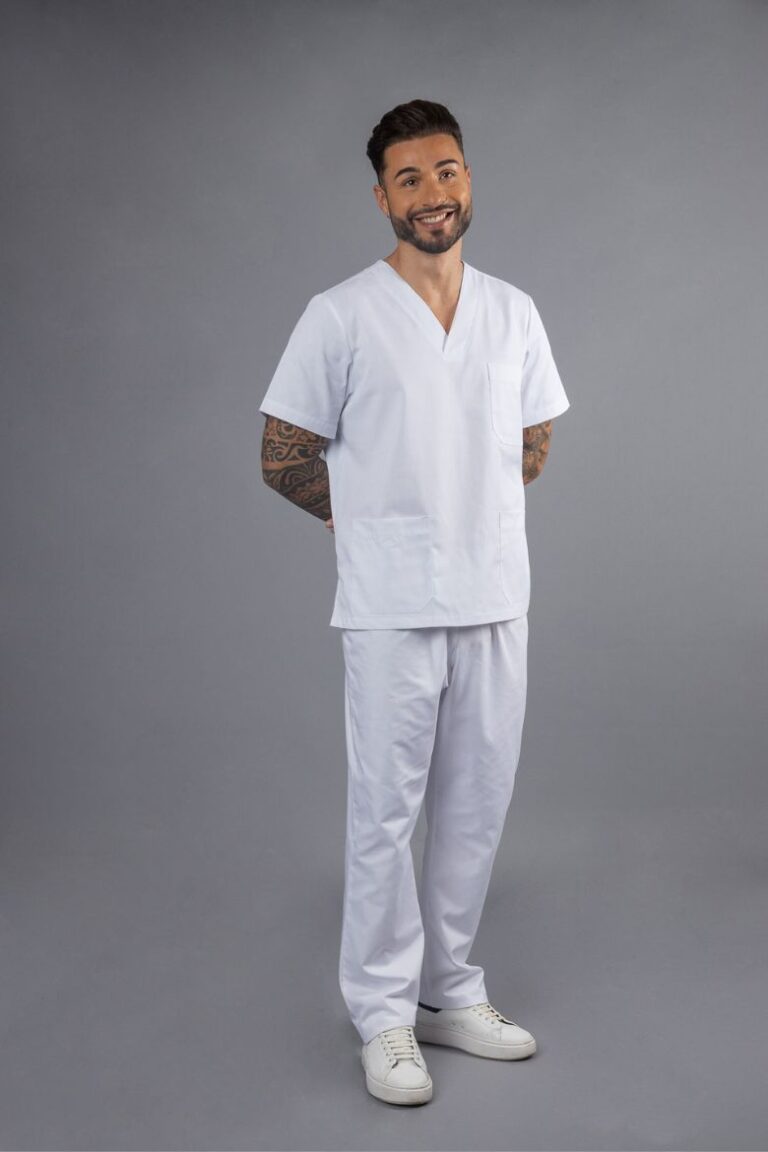
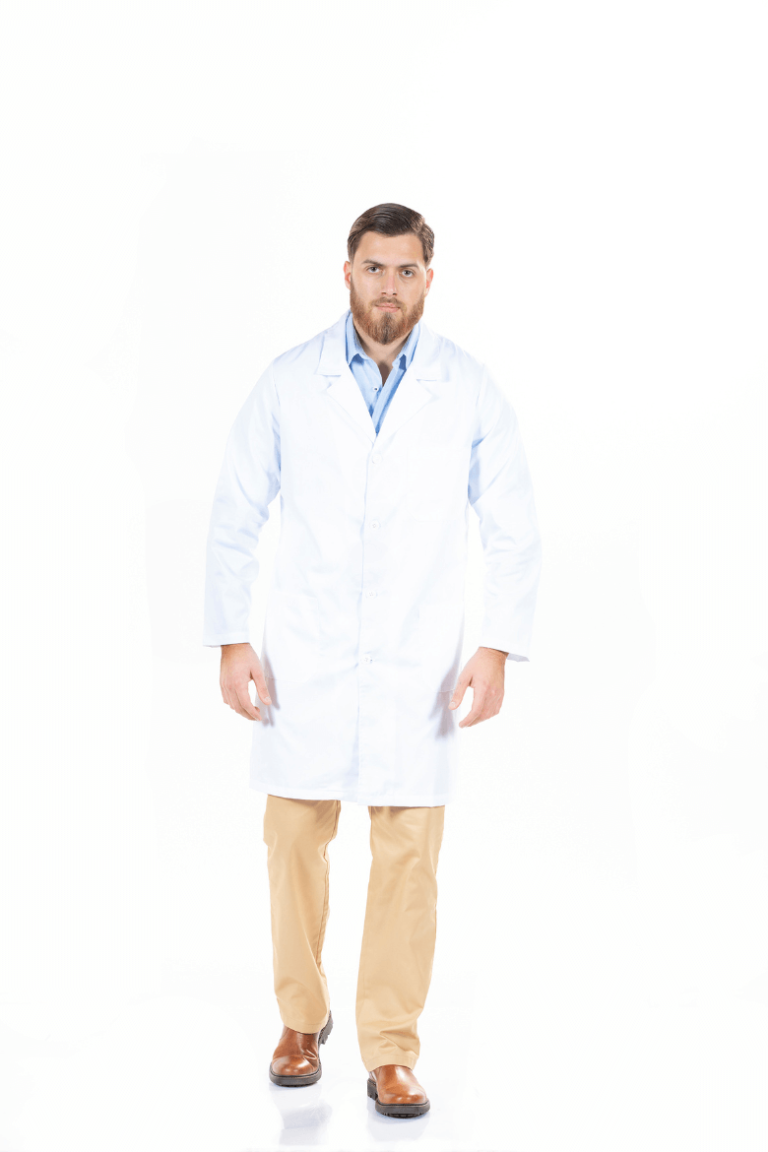

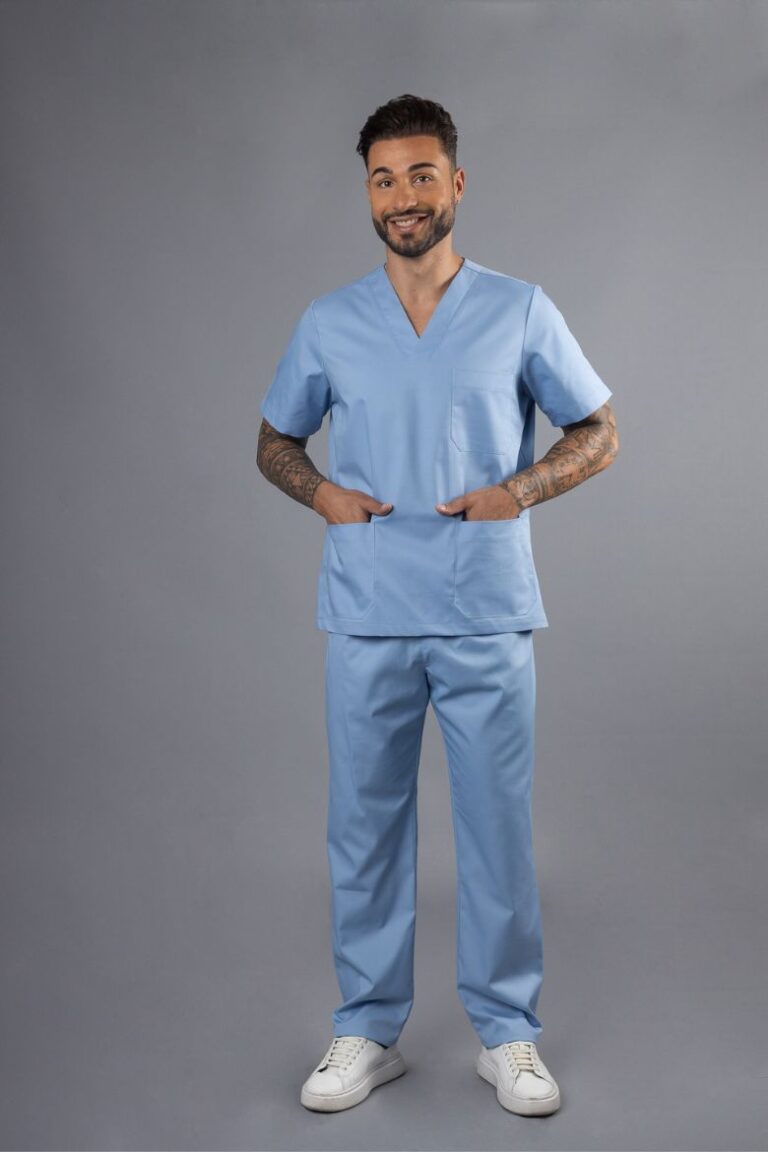
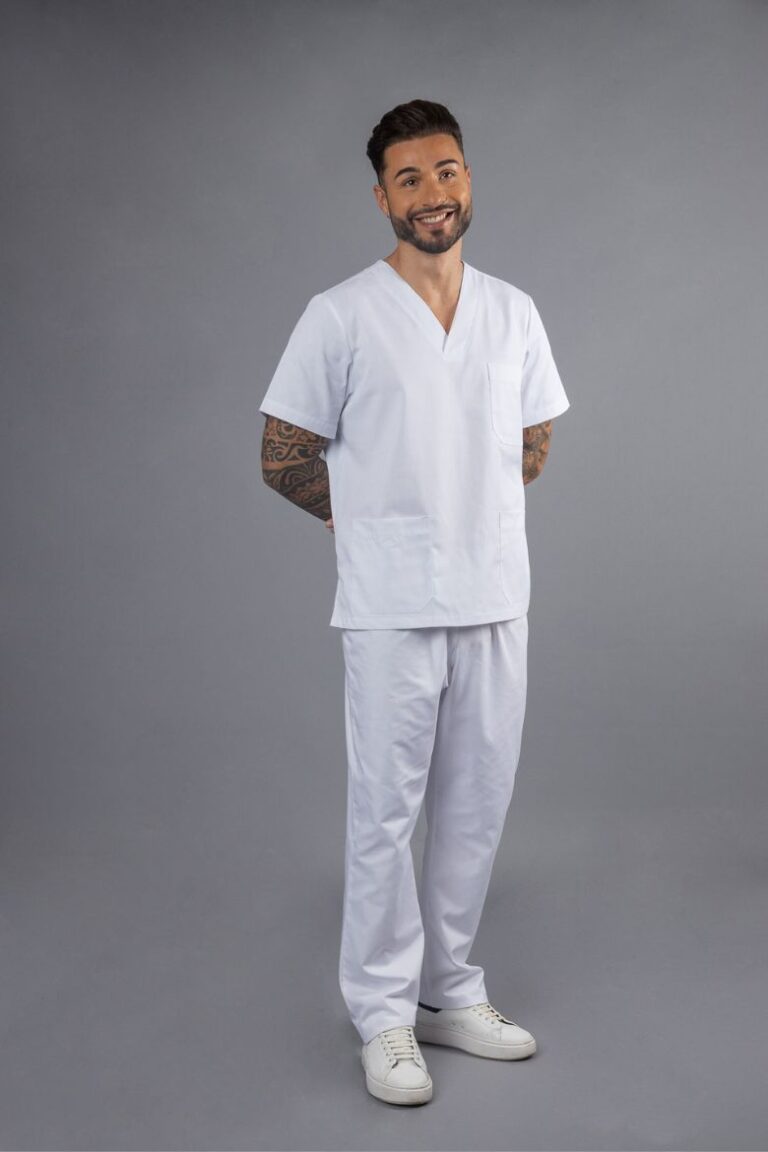
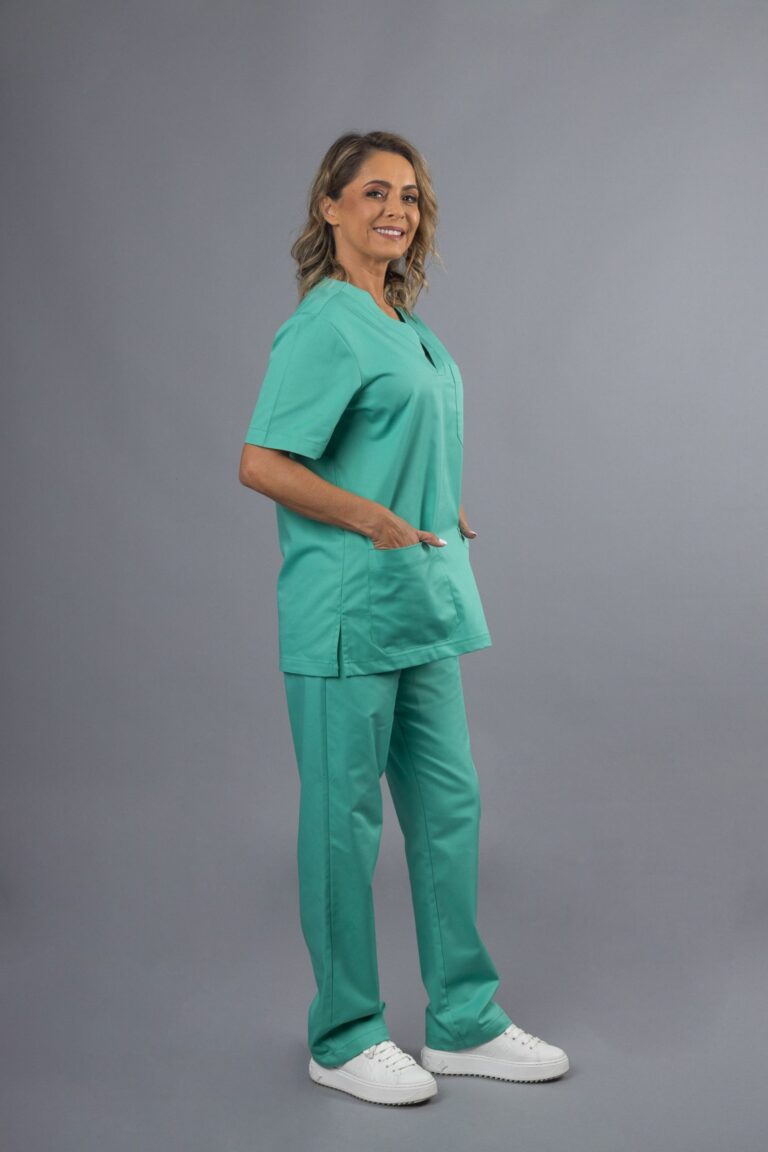
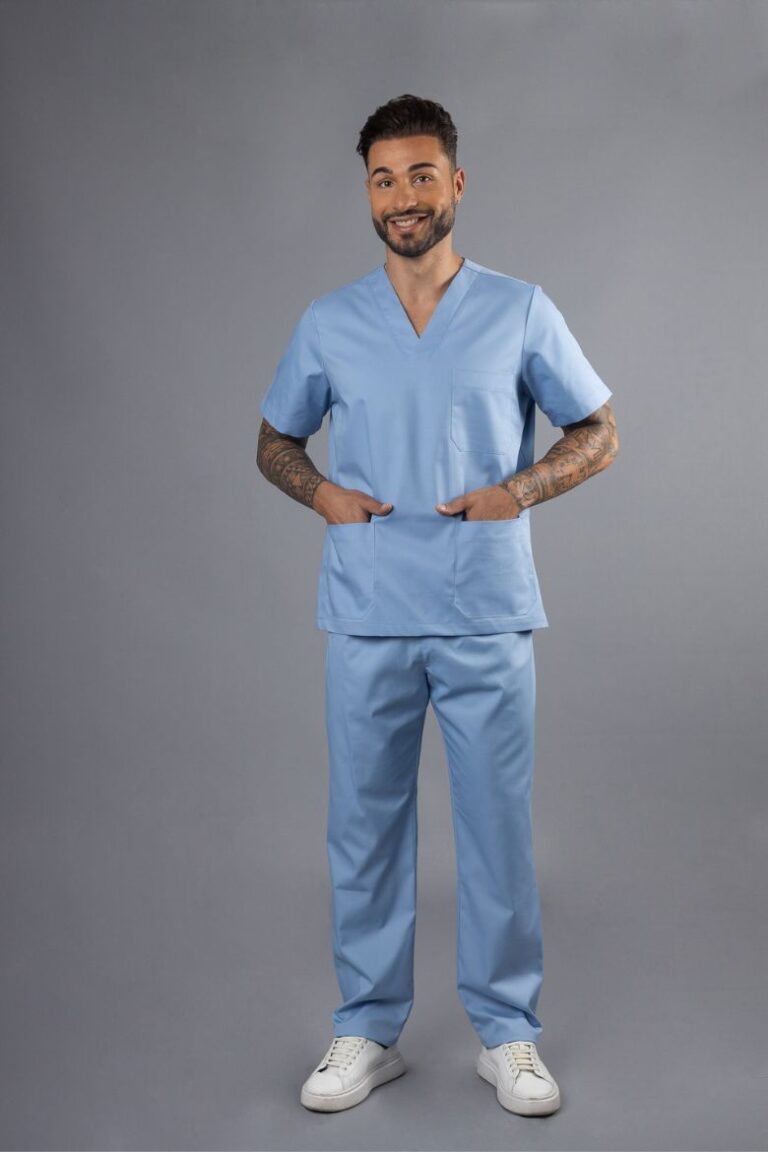
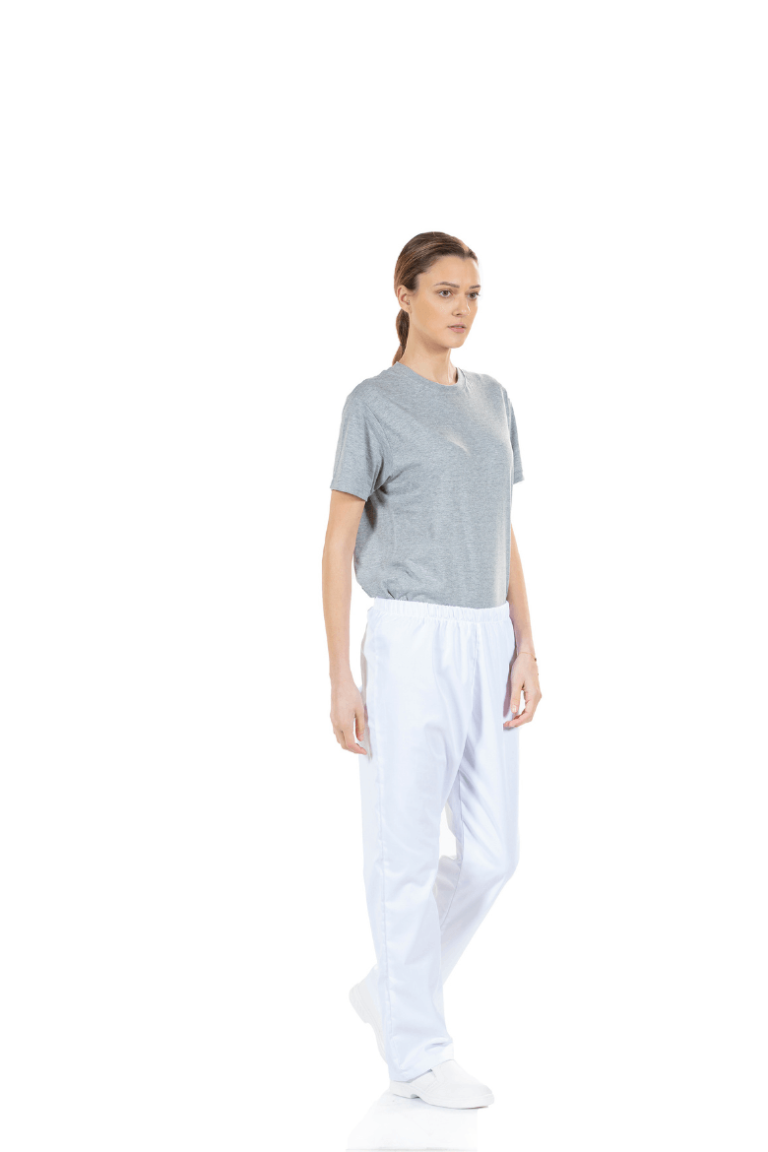
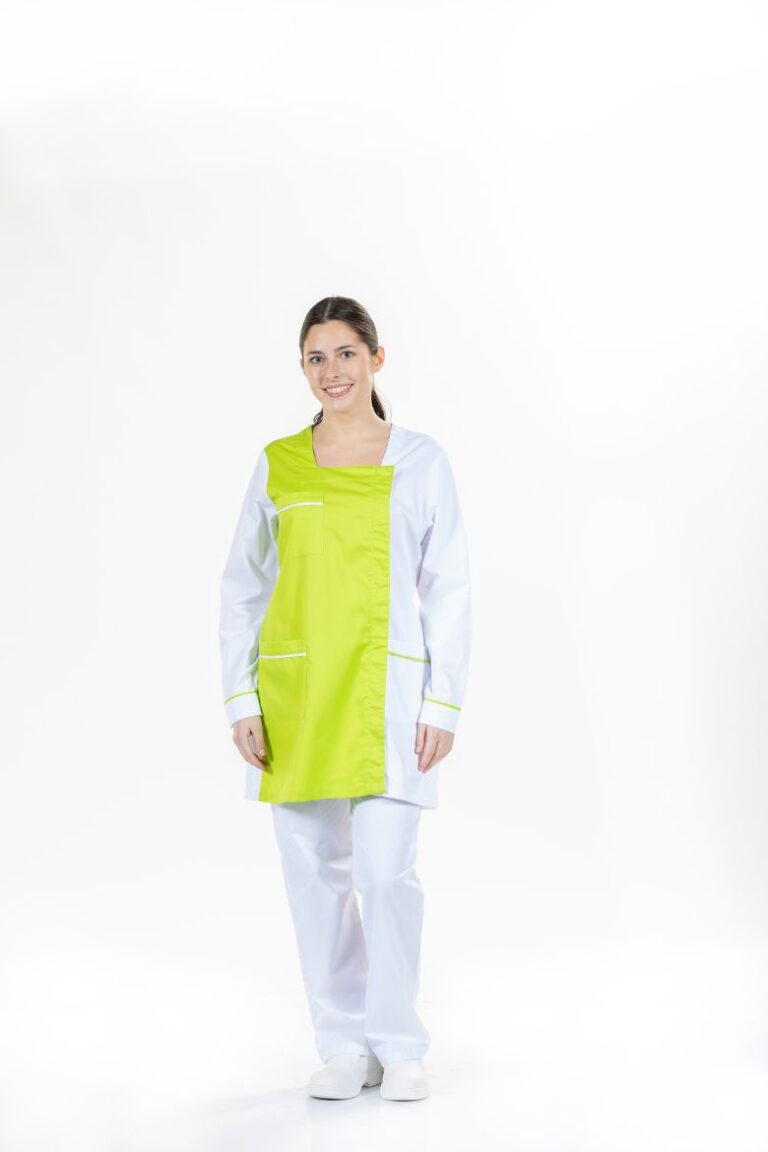
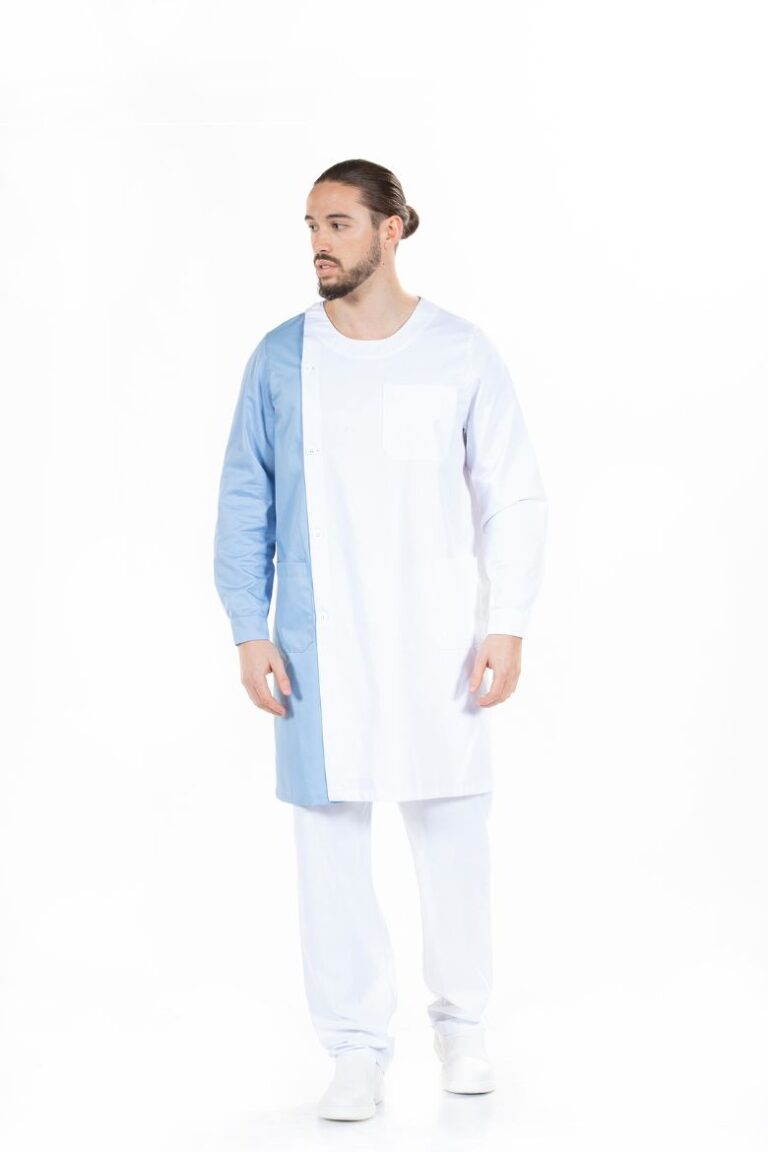
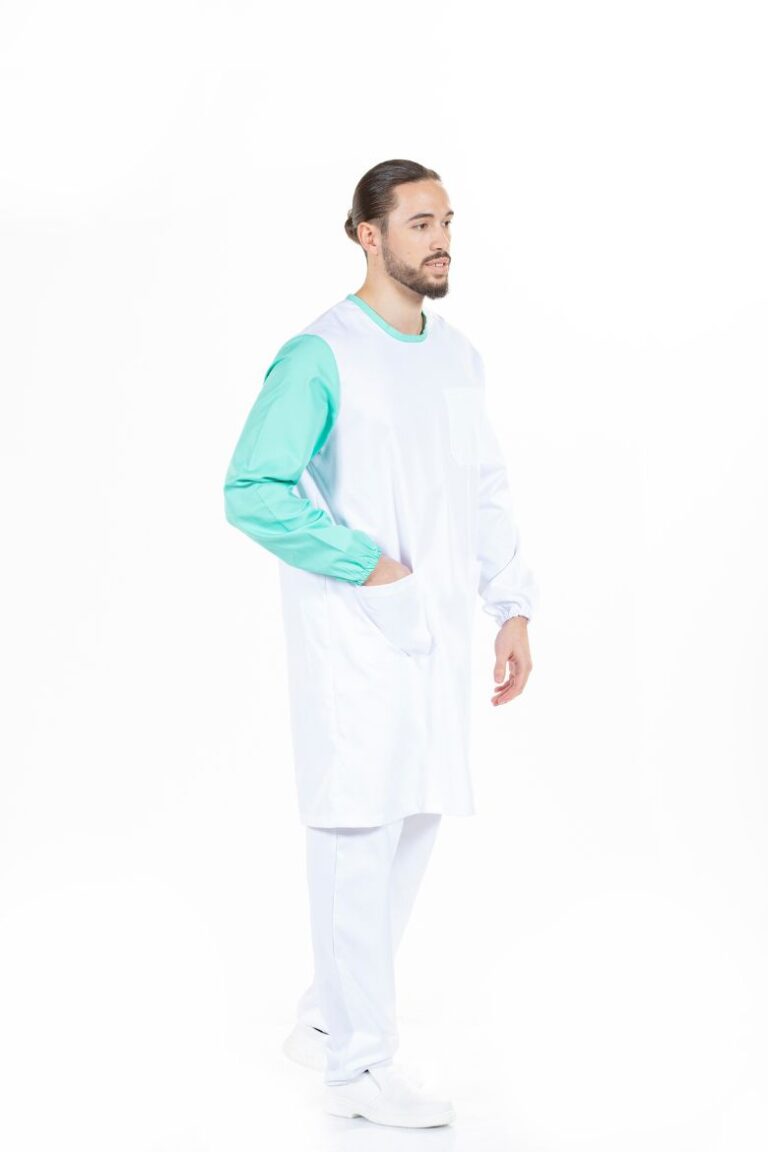
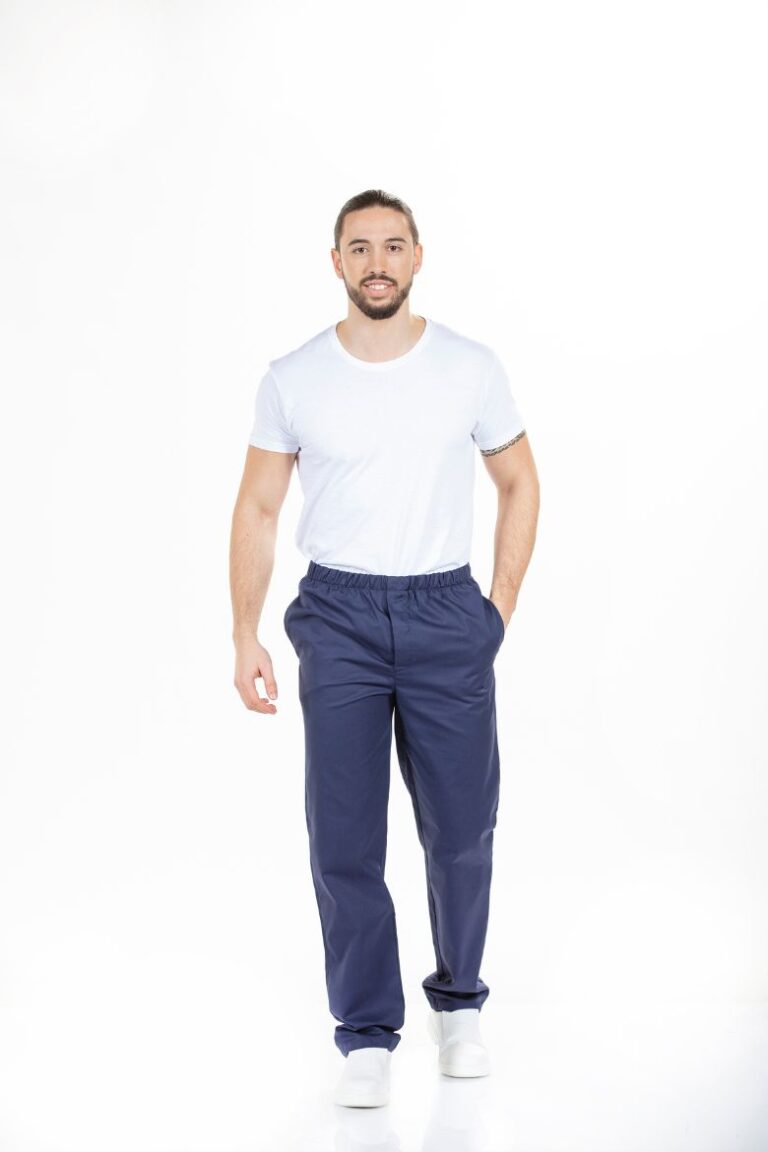
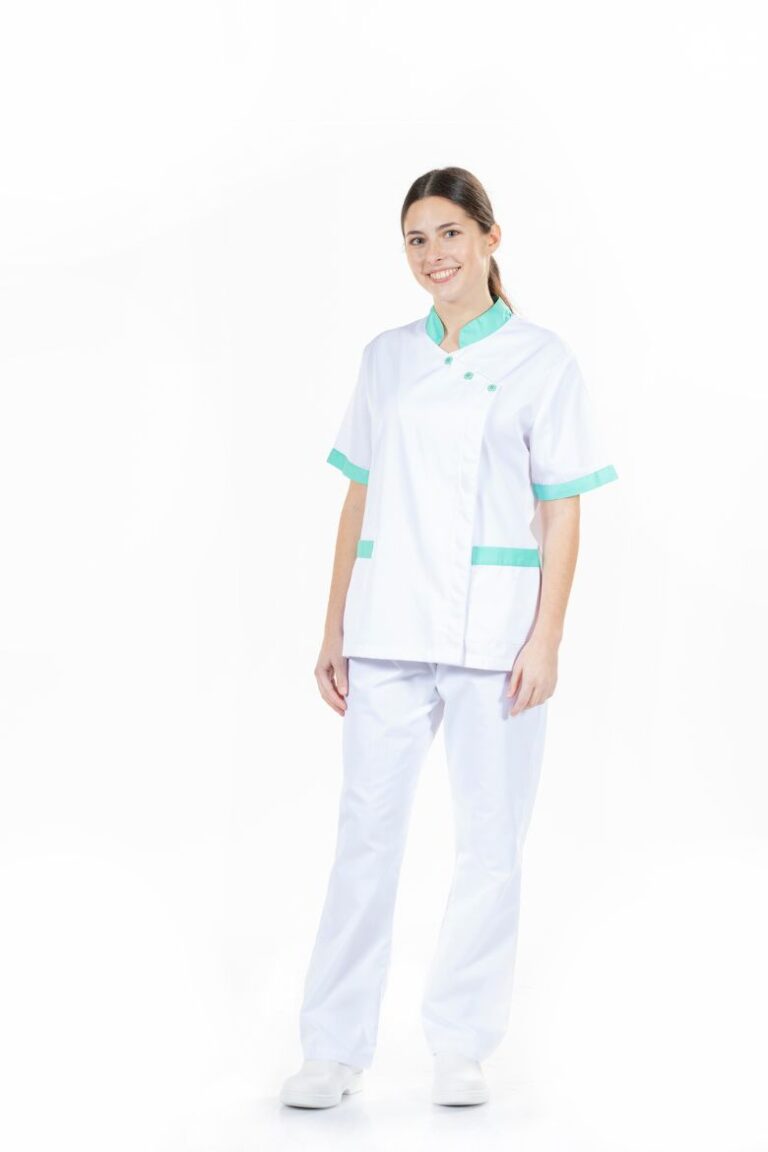
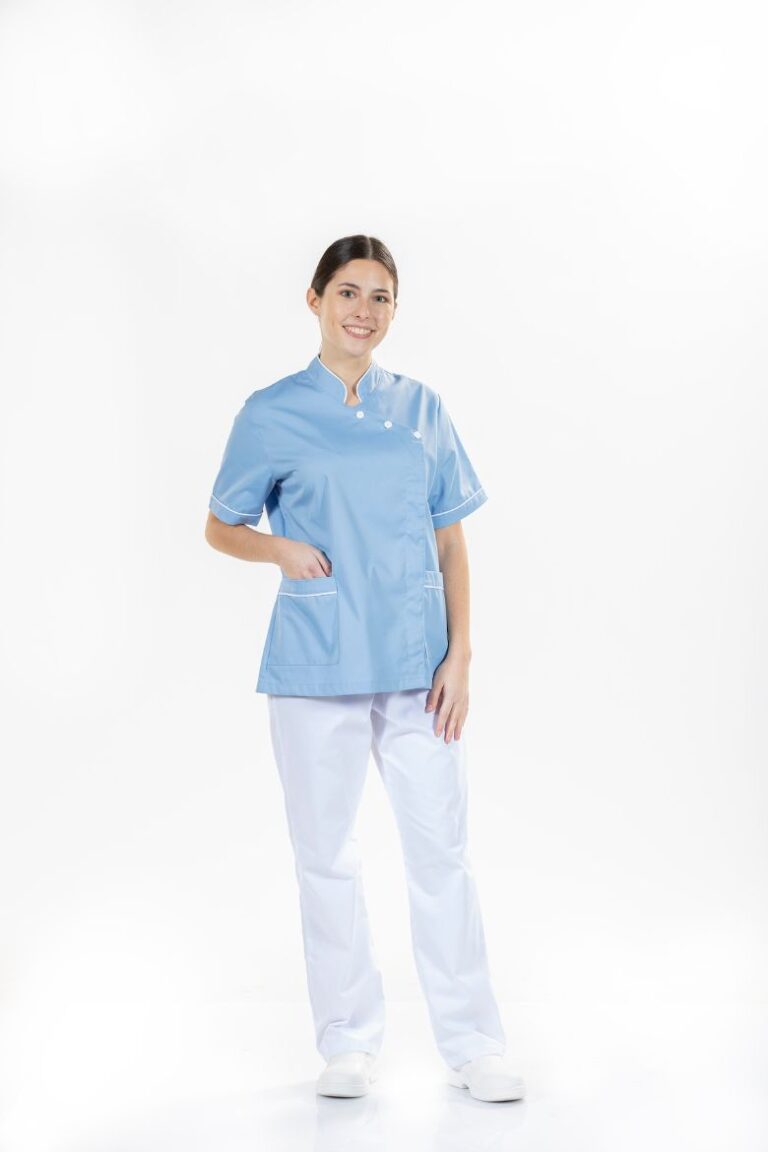
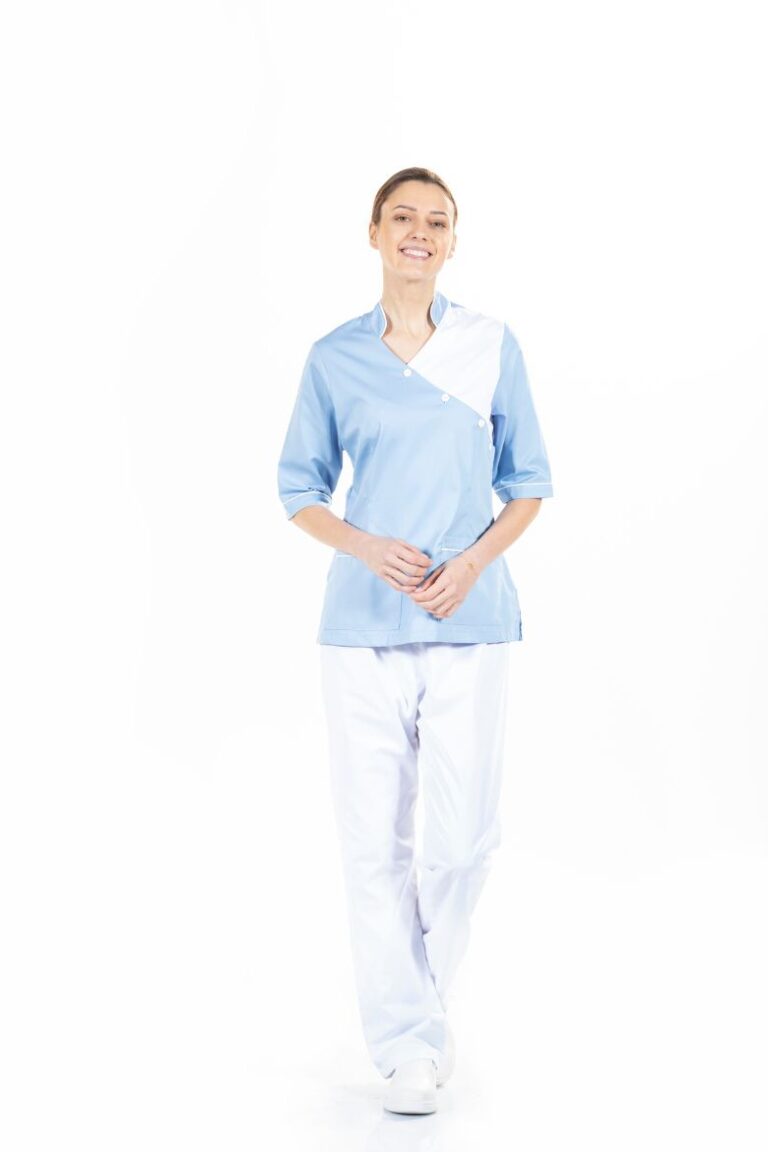
Products with visible prices are those that can be purchased immediately, online, without requiring minimum purchase quantities. This means you can explore our variety of options and purchase exactly what you need, with complete transparency regarding costs and the Professional Apparel model. On the other hand, products without a listed price function as a portfolio of possibilities. These items are highly customizable and can be tailored to each customer's individual specifications. To ensure quality and meet expectations, these products have a minimum order quantity and are subject to a custom quote process.
The most suitable fabric for physiotherapy uniforms should be chosen considering factors such as comfort, durability, strength, breathability, and ease of washing. Some fabric options that are commonly used for physiotherapy uniforms include: • Cotton: Cotton is one of the most popular choices for physiotherapy uniforms. It is soft, comfortable, and breathable, meaning the fabric does not retain sweat and allows the skin to breathe, reducing the risk of skin irritation or allergies. • Polyester: Polyester is known for its durability, water resistance, and quick-drying properties. It is a good option for physiotherapy uniforms that need to withstand frequent washing and exposure to bodily fluids. • Cotton-Polyester Blend: The combination of cotton and polyester offers the best of both worlds: the comfort and breathability of cotton and the durability and strength of polyester. • Antimicrobial Fabrics: Antimicrobial fabrics are designed to kill or reduce the growth of bacteria and fungi, reducing the risk of cross-contamination. They are especially important in hospital environments, clinics, and physiotherapy offices. • Stretch Fabrics: Stretch fabrics are ideal for physiotherapy uniforms, as they allow the mobility needed for physiotherapists to perform their exercises and techniques with ease.
Most educational institutions and clinics choose light colors, such as white, light blue, or light green, to convey an image of hygiene and tranquility. Additionally, the choice of color may also depend on the type of environment in which the physiotherapist works and the patients they attend to. For example, in a clinic focused on children, vibrant and cheerful colors may be more appropriate. Ultimately, the choice of color should be made based on criteria that meet the needs and expectations of the institution and the patients served.
Physiotherapy uniforms are clothing items worn by healthcare professionals who work in hospitals, clinics, private practices, and other healthcare institutions. These uniforms are designed to provide comfort and practicality to physiotherapists, allowing them to perform their tasks efficiently and safely. On this page, we will discuss the features of physiotherapy uniforms, the criteria they must meet to be considered ideal for these healthcare professionals, and the advantages their use offers.
Features of Physiotherapy Uniforms
Physiotherapy uniforms should be designed to meet the specific needs of physiotherapists. They need to be comfortable and flexible, allowing professionals to move freely and perform their tasks with ease. Additionally, the uniforms must be resistant and durable, withstanding daily use and frequent washing.
Physiotherapy uniforms are generally composed of pants and tunics, with some including work coats. The pants should be adjustable and comfortable, allowing the physiotherapist to move freely without restrictions. The tunic should also be ergonomically comfortable, allowing the physiotherapist to move their arms freely without restrictions. Physiotherapy uniforms should be made with breathable materials, such as cotton, to ensure that the physiotherapist feels comfortable and cool throughout the day.
Criteria That Physiotherapy Uniforms Must Meet
Physiotherapy uniforms must meet several criteria to be considered ideal for these healthcare professionals. Below, we list the main criteria that physiotherapy uniforms must meet:
Advantages of Wearing Physiotherapy Uniforms
The use of physiotherapy uniforms offers several advantages for healthcare professionals. Below, we list the main advantages of wearing physiotherapy uniforms:
Protection: Physiotherapy uniforms provide protection for physiotherapists against substances and bodily fluids, as well as protecting the personal clothing of physiotherapists.
Hygiene: Physiotherapy uniforms are designed to be easily washed and disinfected, maintaining the hygiene and safety of both patients and physiotherapists.
Comfort: Physiotherapy uniforms are designed to be comfortable and flexible, allowing physiotherapists to move freely and perform their tasks with ease.
Professionalism: Physiotherapy uniforms provide a professional and organized appearance for physiotherapists, which can help improve the image of the healthcare institution.
Cost-Effectiveness: The use of physiotherapy uniforms can help save money, as uniforms can be washed and reused multiple times, avoiding the need to purchase personal clothing for work.
Physiotherapy uniforms are essential clothing items for healthcare professionals. They are designed to provide comfort, practicality, and safety to physiotherapists, allowing them to perform their tasks efficiently and effectively. Physiotherapy uniforms must meet several criteria to be considered ideal, such as comfort, durability, breathability, hygiene, identification, and fit. The use of physiotherapy uniforms offers several advantages for healthcare professionals, such as easy identification, protection, hygiene, comfort, professionalism, and cost-effectiveness.
Fardamento à sua medida.
Descubra as nossas
soluções.
Fardamento à sua medida.
Descubra as nossas
soluções.
To subscribe, please enter your e-mail address and click on “Subscribe”.
You can stop receiving our communications by clicking on the link in the footer of any of our newsletters.
Para efetuar a sua subscrição, por favor insira o seu e-mail e clique em “Subscrever”.
Poderá parar de receber as nossas comunicações, ao clicar no link para o efeito encontrado nos rodapés de qualquer uma das nossas Newsletters.
UNIFARDAS® supports Espaço T, which is an inclusive organisation, of all and for all, and our common goal is to increase employment opportunities for young people with special needs and/or who, for some reason, have been excluded from the labour market.
We work hard to provide safe working conditions by going beyond the imposed and mandatory minimums.
We support, nurture and offer continuous training programmes aimed at improving skills.
At UNIFARDAS® we keep up to date with the latest technologies and innovations that can optimise our production process making it more efficient and close to zero waste.
UNIFARDAS® is a partner of Espaço T, an inclusive organisation, of all and for all, with the common goal of increasing employment opportunities for young people with special needs and/or who, for some reason, have been excluded from the labour market. In this organisation, immigrants will also find a support network in finding work and housing.
In addition to the sustainable path we have been taking throughout our production and supply chain, UNIFARDAS® participates, supports and organises a beach clean-up every year after the bathing season, in partnership with World Clean-up Day. We are also partners of Seaqual, an entity that, together with some other partners, promotes the collection of ocean waste and its transformation into upcycled marine plastic that will then be used in the production of fabric and other sustainable products.
In addition to the sustainable path we have been taking throughout our production and supply chain, UNIFARDAS® participates, supports and organises a beach clean-up every year after the bathing season, in partnership with World Clean-up Day. We are also partners of Seaqual, an entity that, together with some other partners, promotes the collection of ocean waste and its transformation into upcycled marine plastic that will then be used in the production of fabric and other sustainable products.